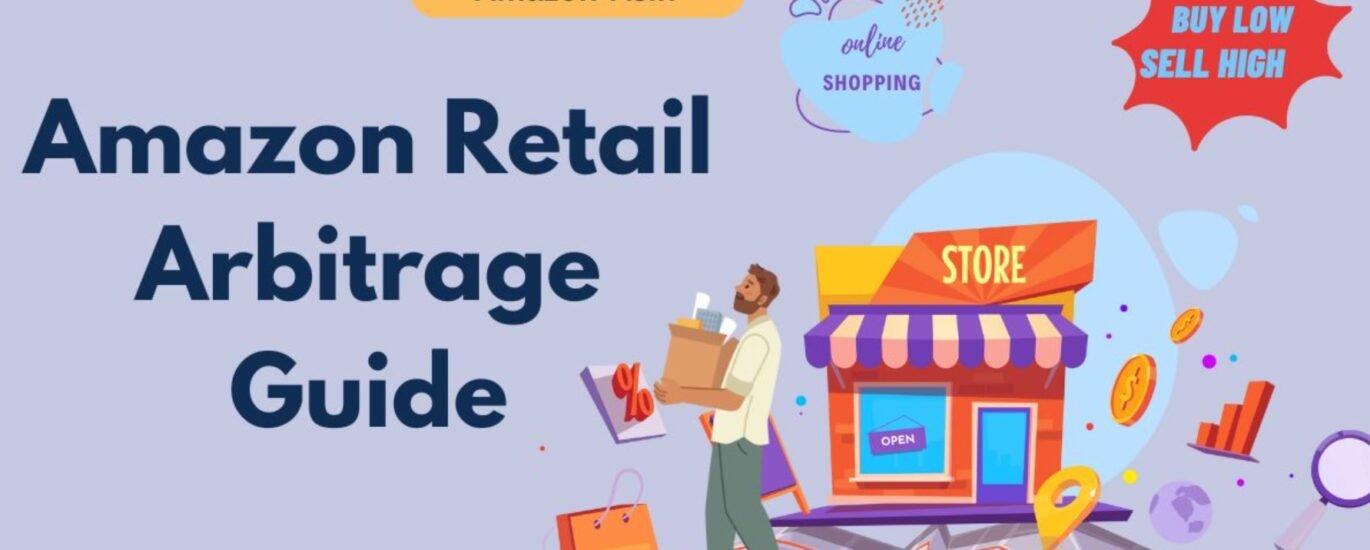Retail Arbitrage is a popular business model that involves buying discounted products from retail stores and reselling them for a profit on platforms like Amazon, eBay, or Facebook Marketplace. It’s a low-cost, low-risk way to start an online business, and with the right strategies, it can be highly profitable. If you’re looking to start flipping products for profit in 2024, this guide will walk you through everything you need to know to get started.
What is Retail Arbitrage?
Retail arbitrage is the practice of purchasing products from retail stores at a discount and reselling them online for a higher price. The goal is to take advantage of price differences between retail stores and online marketplaces to make a profit.
For example, you might find a toy on clearance at Walmart for
10andsellitonAmazonfor
10andsellitonAmazonfor30, earning a $20 profit (minus fees and shipping costs).
Why Start Retail Arbitrage in 2025?
- Low Startup Costs
You can start with as little as - 100–
- 100–200, making it an accessible business model for beginners.
- Flexibility
Work on your own schedule and scale your business as you grow. - High Profit Potential
With the right product selection and pricing strategy, you can earn significant profits. - Learn Valuable Skills
Gain experience in product research, pricing, and online selling.
Steps to Start Retail Arbitrage in 2025
1. Research and Understand the Market
Before you start buying products, it’s essential to understand the retail arbitrage market. Key areas to focus on include:
- Popular Categories: Toys, electronics, home goods, and health & beauty products are often profitable.
- Seasonal Trends: Certain products sell better during specific times of the year (e.g., holiday decorations in December).
- Competition: Research what other sellers are offering and identify gaps in the market.
Tips:
- Use tools like Jungle Scout, Helium 10, or AMZScout to analyze product demand and competition.
- Follow retail arbitrage communities on Facebook, Reddit, or YouTube for insights and tips.
2. Create an Amazon Seller Account
Amazon is one of the most popular platforms for retail arbitrage. To get started:
- Sign up for an Amazon Seller Account (choose the Individual plan if you’re just starting out).
- Familiarize yourself with Amazon’s policies, fees, and requirements.
Tips:
- Consider using Fulfillment by Amazon (FBA) to handle storage, shipping, and customer service.
- Ensure your account is in good standing to avoid suspensions.
3. Find Profitable Products
The key to successful retail arbitrage is finding products with a high profit margin. Here’s how to do it:
- Scan Clearance Sections: Look for discounted items in stores like Walmart, Target, or Kohl’s.
- Use Scanning Apps: Tools like ScanPower, Profit Bandit, or SellerApp can help you quickly check a product’s profitability on Amazon.
- Check Online Deals: Websites like Slickdeals or RetailMeNot often list discounted products that can be resold for a profit.
Tips:
- Focus on products with a high sales rank (indicating strong demand).
- Avoid restricted categories (e.g., groceries, beauty products) unless you’re approved to sell them.
4. Calculate Your Profit Margin
Before purchasing a product, calculate your potential profit margin. Consider the following costs:
- Purchase Price: The price you pay for the product.
- Amazon Fees: Referral fees (6–15% of the sale price) and FBA fees (if applicable).
- Shipping Costs: If you’re using FBA, factor in shipping costs to Amazon FBA VA jobs.
- Other Costs: Packaging materials, labels, and taxes.
Formula:
Profit = Selling Price – (Purchase Price + Fees + Shipping + Other Costs)
Tips:
- Aim for a profit margin of at least 30–50%.
- Use profit calculators like those in scanning apps to simplify the process.
5. Purchase and List Your Products
Once you’ve identified profitable products, purchase them and list them on Amazon. Here’s how:
- Create a Listing: Use Amazon Seller Central to create a new product listing or match an existing one.
- Optimize Your Listing: Write a compelling title, description, and bullet points. Use high-quality images.
- Set Your Price: Price your product competitively while ensuring a good profit margin.
Tips:
- Use keywords in your listing to improve visibility.
- Monitor your competitors’ prices and adjust yours accordingly.
6. Ship Your Products to Amazon (FBA)
If you’re using FBA, follow these steps:
- Prepare Your Products: Package and label your items according to Amazon’s guidelines.
- Create a Shipment: Use Amazon Seller Central to create a shipment plan and generate shipping labels.
- Send Your Products: Ship your products to Amazon’s fulfillment center.
Tips:
- Use Amazon’s partnered carriers for discounted shipping rates.
- Track your shipment to ensure it arrives on time.
7. Monitor and Optimize Your Listings
Once your products are live, monitor their performance and make adjustments as needed:
- Track Sales: Use Amazon Seller Central to monitor your sales and inventory levels.
- Adjust Pricing: Change your prices based on demand and competition.
- Respond to Customer Inquiries: Provide excellent customer service to maintain a high seller rating.
Tips:
- Use Amazon PPC (Pay-Per-Click) advertising to boost visibility for your listings.
- Regularly review your profit margins and adjust your strategy as needed.
Tips for Success in Retail Arbitrage
- Start Small
Begin with a small budget and scale up as you gain experience. - Focus on High-Demand Products
Prioritize products with strong sales potential and low competition. - Build Relationships with Stores
Get to know store managers and employees to gain access to better deals. - Stay Organized
Keep track of your inventory, expenses, and profits using spreadsheets or inventory management tools. - Diversify Your Sourcing
Explore multiple retail stores and online deals to find the best products.
Tools and Resources for Retail Arbitrage
- Scanning Apps
- ScanPower
- Profit Bandit
- SellerApp
- Product Research Tools
- Jungle Scout
- Helium 10
- AMZScout
- Profit Calculators
- Amazon FBA Calculator
- ScanPower Profit Calculator
- Deal Websites
- Slickdeals
- RetailMeNot
- BrickSeek
Conclusion
Retail arbitrage is a fantastic way to start an online business with minimal upfront investment. By following the steps outlined in this guide, you can identify profitable products, list them on Amazon, and start earning a steady income. Remember, success in retail arbitrage requires patience, persistence, and continuous learning.
As you gain experience, you can scale your business by sourcing more products, exploring new marketplaces, and optimizing your listings. With dedication and the right strategies, you can turn retail arbitrage into a profitable and rewarding venture in 2025. Happy flipping!






